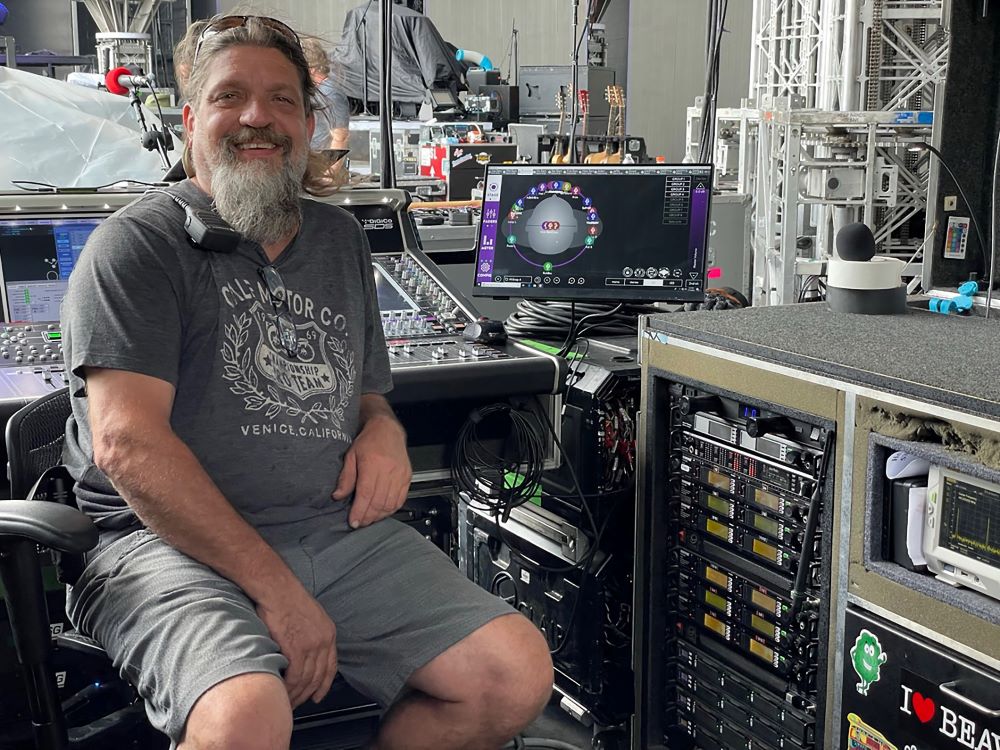The Stadium Tour earlier this year, headlined by Def Leppard and Mötley Crüe joined by special guests Poison and Joan Jett & The Blackhearts, marked Def Leppard’s first foray with the KLANG immersive in-ear monitor mixing platform provided via a DMI-KLANG card-equipped DiGiCo Quantum5 monitor console supplied by Clair Global.
The KLANG platform first came to the attention of Ted Bible, longtime monitor mixer for the Rock & Roll Hall of Fame members and two-time American Music Awards winners, when one of the band members downloaded the KLANG:app and wanted to try it out. This was just before the pandemic closed down touring for over two years, which gave Bible more time to become familiar with it, including taking an online class on the product and technology with KLANG:technologies’ Phil Kamp.
Its first deployment for would be on the 36-date The Stadium Tour, which kicked off in mid June at Atlanta’s Truist Park. The pandemic compelled the band to have a backup musician for each member, and that group did three and a half weeks of rehearsals in Los Angeles ahead of the tour start. It proved advantageous for Bible, who has been with the group since 2002’s X Tour.
“One of the things I especially like about the DMI-KLANG card is that I can simply slap it into the DiGiCo Quantum5 I’m using on tour, add a Mac Mini computer connected through a network cable and switch, and I immediately have 64×32 I/O, which doesn’t eat up any physical connections on the console,” he explains. “Once that’s in place, there’s not much else to it. The band has been playing these songs for decades and I’ve been mixing their monitors for years, so we all know what they want to hear onstage. The KLANG system gets it to them cleanly and reliably.”
Bible adds most of the band quickly took to the KLANG system, and he points to itsits ability to keep instrument relationships steady as they moved about the stage, in conjunction with the Shure PSM 1000 transmitters and JH Audio Sharona IEMs they’re using. One band member who had long been reluctant to move completely to IEMs and preferred relying on wedge monitors, agreed to try them out tentatively for this tour.
“His monitors tended to be panned harder and need more gain,” he notes. “First, we eased into IEMs with just vocals in them, but by four or five shows in, he jumped all-in on them. And the fact that KLANG has bi-directional control of the faders and other parameters, like elevation and width, adds to the sense of control each musician has onstage. All of the band members love the sense of space around them that KLANG offers. In fact, they even think the in-ears sound better than the album! Having the 360-degree space means we don’t have to carve out as much frequency space, allowing each monitor channel to sound fuller.”




















